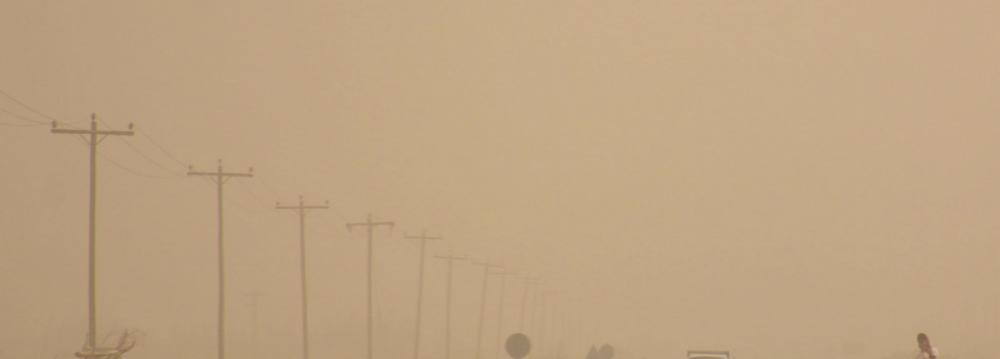Officials released 20 million cubic meters of water to the imperiled Hamoun Wetlands on Friday following an order by the Department of Environment to reduce the intensity of dust and sandstorms in Sistan-Baluchestan Province.
Quoting DOE chief Massoumeh Ebtekar, the official environment news agency, or PAM, reported that water has been released in key areas of the wetlands to help “control dust storms”.
Hamouns are one of the major domestic sources of dust and sandstorms in southeastern Iran, battering major cities such Zahedan and Zabol, which was ranked by the World Health Organization as the most polluted city in the world (based on PM2.5 concentration) earlier this year.
Zabol is also a victim of sandstorms originating in Pakistan and Afghanistan. These conditions are caused by the so-called “120-day winds” in the warmer months and are exacerbated by the desiccation of Hamoun Wetlands.
A recent report suggests that the wetland, prior to being flooded on Friday, contained more water than last year, which “shows that efforts to revive the lake are working”.
In April, the provincial office of the DOE said it was going to bring down the central levee on the Hamouns to allow water to flow more freely into the desiccating wetlands—a part of a comprehensive scheme drawn up by the Conservation of Iranian Wetlands Project to help revive the once-thriving wetlands.
Hamouns are transboundary wetlands on the Iran-Afghanistan border and constitute three lakes: Hamoun-e Helmand, which is entirely in Iran; Hamoun-e Sabari on the border; and Hamoun-e Puzak, which is almost entirely inside Afghanistan.
The three lakes are linked and fed by water from Afghanistan’s Helmand River.
The construction of dams and canals in Afghanistan has led to water being drawn for agriculture in the Afghan provinces of Kandahar, Helmand and Nimrooz, causing water levels in the lakes to plummet. To make matters worse, four reservoirs were built within Iran, diverting more water and speeding up the desiccation of the wetlands.
Twenty years ago, most of the area was green and flora and fauna abundant. The lake teemed with fish and the total annual catch used to exceed 12,000 tons.
The wetlands also supported agriculture and livestock breeders, providing a livelihood for thousands of households.
With an area of about 50,700 square kilometers, the interconnected wetlands together were considered the largest freshwater lake across the Iranian Plateau.
Once a thriving lagoon and a major source of income for the locals, the Hamouns are now almost completely dry, becoming the biggest source of dust storms in the province and one of the largest in eastern Iran.
In an attempt to attract global attention to the dire state of the wetlands and secure funds from international organizations, Iran is planning to nominate the Hamouns to the UNESCO Man and Biosphere Program.


